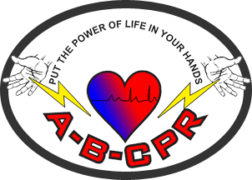2014-2015 Influenza Season
The risk of Flu has decreased, but remains elevated overall in the United States. Remember that 80% of all influenza illness generally occurs in January, February, and March each year.
Get the Flu Vaccine Now
This year, one of the flu viruses that is causing illness in communities does not perfectly match the virus strains in the vaccine. This may lead to lower vaccine effectiveness against that virus (H3N2). The flu vaccine still offers some protection against H3N2, as well as protection against the other flu viruses expected to circulate this year. Some protection is better than no protection. Therefore, the American Academy of Pediatrics (AAP) continues to recommend that all children 6 months and older (and their caregivers), who are eligible for influenza vaccination, be immunized against influenza as soon as possible.
Child care providers should continue to encourage the flu vaccine until the vaccine expiration date (June 30, marking the end of the influenza season), because influenza is unpredictable. After immunization, children generally remain protected for six months or longer. Influenza can have more than 1 disease peak and may extend into March or later. In addition, although the peak of influenza activity in the United States tends to occur in January through March, influenza activity can occur in early fall (ie, October and November) or late spring (eg, influenza circulated through the end of May during the 2013-2014 season). This gives ample opportunity to administer a second dose of vaccine when indicated. It should be noted that internationally, influenza can occur throughout the year. So children traveling overseas may either be at risk themselves or put other children at risk if they are not immunized, regardless of the time of the year.
As an important second line of defense, influenza antiviral treatment (for example, Tamiflu®) can lessen symptoms and shorten the time people are sick with the flu. It also may prevent serious flu complications. No child is too young to receive antiviral medicines for treatment. When someone has flu symptoms (sudden onset of fever; abdominal pain; chills; cough; croup, bronchiolitis, or pneumonia; decreased energy or feeling a lot more tired than usual; headache; muscle aches and pains; nasal congestion; nausea; sore throat), families should check with their doctor early on in the illness to see if antiviral treatment is recommended.
Practice Proper Cough and Sneeze Etiquette
Staff members and children should be taught to cover their mouths and noses with a tissue when they cough or sneeze, or they should be encouraged to cough into the elbow or shoulder (ie, not into their hands). After coughing/sneezing, everyone should be encouraged to wash their hands with soap and water. Consider displaying educational materials in the Head Start or early education and child care program to encourage proper hand hygiene and cough/sneeze etiquette.
Review Immunization Documentation
Programs should review immunization documentation records to confirm that children have been immunized for influenza. All child care facilities should require that parents/guardians of children enrolled in child care provide written documentation of receipt of immunizations appropriate for each child’s age.
Free Online Training Module
Resources
AAP Caring for Our Children Manual
AAP Healthy Child Care America Web Site
AAP Managing Infectious Diseases
AAP Model Child Care Health Policies
AAP Preparing Child Care Programs for Pandemic and Seasonal Influenza Web Page
AAP Preventing the Flu: Resources for Parents and Child Care Providers Web Page
CDC Fact Sheet No More Excuses: You Need a Flu Vaccine!
Head Start Health Services Newsletter “Preventing and Managing the Flu”
Families Fighting Flu Web Site
Flu Information – Free Print Materials from the CDC
Prevent Childhood Influenza Web Site

Recent Comments